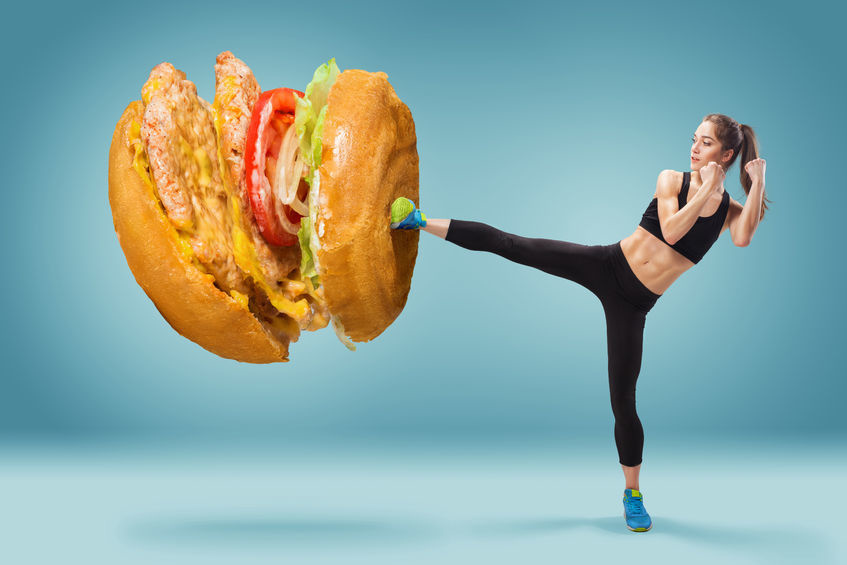

123RF
Aren’t we all looking for an easy way when it comes to losing weight? Why wait months for great results if you can have them sooner? Well, now you can!
You’ve probably heard about the
keto diet and wondered how you can also get the incredible weight loss results you’ve seen plastered all over social media.
As with any weight loss strategy, the keto diet is not without its challenges. But if you are looking for the difference between reaching the summit wearing flip flops versus a pair of Merrells, our
Top 5 Keto Hacks will help boost both your initial results, as well as maintain sustainable fat burning and weight loss. So, whether you are a keto newbie or a keto lifer, these hacks might just be the difference you are looking for.
Read on to discover our top 5 tips for
hacking the keto diet so that you experience results faster and more effectively than you ever thought possible.
1.Be Prepared: Create the Perfect Keto Environment

123RF
As with anything in life, preparation is key to succeeding with your goals. So setting yourself up and creating the perfect environment for reaching your keto goals is essential for motivating you to sustain a long-term success plan.
The battle between your emotional brain versus your rational brain is a tough one to fight when it comes to making the right food choices. What we see, smell, feel or think can trigger a strong response that can make dieting incredibly challenging as the initial euphoria and willpower of the new diet fades into oblivion.
It is hard to remain motivated, strong-willed, or disciplined in those moments when the uncontrollable cravings become too much and we cave in. This is the main reason why sustainable weight loss is so difficult and one of the fundamental mechanisms behind weight regain. We stick to the diet for a few months, but those potent food triggers and desires win out in the long run. Our rational mind may win some battles at first, but our emotional mind will usually win the war.
So, making it as easy as you can within the environment you operate within is paramount to successful food choices.
One of the best ways to address this common issue is to change your food environment so that it influences you to make better choices instead of unhealthy ones. This weight loss hack will remove the triggers that cause many of the internal conflicts between your emotional mind and rational mind.
Let’s take a look at what you can do at home and on the go to ensure weight loss that is easier to achieve and sustain.
Changing Your Home Food Environment
- Take away carb heavy or unhealthy foods. If there are other family members to consider, store in a place that is difficult to reach, reducing temptation and reducing craving triggers.
- Alternatively, make all keto-friendly foods easy to access in convenient places to increase your chances to maintain diet success.
- Reduce portion sizes by eating off smaller plates. Studies have shown up to 22% reduction in calories by simply reducing the size of the plate we eat from! The belief is that the portion size looks much bigger giving the optical illusion that you are eating more than you actually are, helping you to feel full quicker and for longer.
- Plan for sweet cravings! They are something that you need to be well ready for because they are definitely going to happen – it is unavoidable. Stock up on keto-friendly sweeteners and prepare keto desserts ahead of time. There are so many delicious recipes out there to combat your sweet tooth just check out Pinterest and Instagram! But, be aware that you can still gain weight from eating keto-friendly desserts, they are not calorie free!
Changing Your Food Environment When on the Go
Being out of the safe prepared environment of a keto-friendly home can be a real challenge but with a little forethought, being out on the go doesn’t need to be as daunting as it may seem. By making a few simple changes, you can prevent weight gain while traveling:
- Carry snacks that are keto-friendly with you. Having food that is easily on hand will lower the chances of just grabbing whatever you can get your hands on and keep your cravings at bay and prevent overeating.
- Do your research before you leave the house. If you know where you are going, check menus and which stores there are in the area to find specific keto-friendly options available.
- Don’t beat yourself up with a slight deviation. If you are away for a few days, it won’t do harm to reach out for some local food within moderation. You don’t have to stay on keto to lose weight and prevent weight gain while traveling. As long as you are sensible with your choices and remain active, a short deviation is not going to throw you off track.
2.Introduce MCT Oil

123RF
Research shows that the benefits of medium-chain triglycerides (MCTs), also known as the ‘friendly fat’, is great for supporting the body to ensure great results for keto dieters.
MCT’s are digested very differently to other fats as they go straight to the liver where they are converted into ketones. Increased ketones help your body reach ketosis faster and many have reported improved cognitive energy and feeling less hungry. Other positive benefits include improved gut health as well as thermogenic effects to help burn fat faster.
Experts suggest that MCT oil is more effective than coconut oil as it contains a lower number of carbons in the fat chain which are more rapidly absorbed into the body.
Take Exogenous Ketone Salts
Adding exogenous ketone salts in the way of nutritional health supplements is an effective way to help increase the level of ketones in the blood more than what is typically achievable with diet alone. Top quality exogenous ketones help support the body during the keto diet in a number of ways including:
- Speeding up ketosis
- Maintaining ketosis
- Staving off keto flu
- Restoring lost electrolytes
- Suppressing appetite
- Increasing energy
A top quality exogenous ketone supplement should contain at least 3-4 types of BHB derived ketone salts including sodium, calcium, magnesium and the much ignored, but essential, potassium. If you are able to find a supplement that also contains MCT oil, you are onto a winner! An effective daily serving should be around 2000mg on average.
Be Active and Exercise
The first few weeks on keto is not a good time to try a new workout so bear this in mind when first starting. Once the initial keto flu symptoms have subsided (which can occur in the first few weeks), this is the time to add exercise and activity to the mix.
General advice includes continuing with your usual routines but not introducing anything new until your body has established ketosis and the grogginess of keto flu has passed.
Fuel Your Body
Keto dieters have a tendency to undereat given that they exclude an entire food group – carbs – as well as the fact the keto Diet suppresses appetite so the body may not receive enough energy to workout effectively. A reduction in calories along with your exercise routine will very likely make you feel unwell and affect your performance. Keep a check on what you eat especially before working out and make sure you are consuming enough calories from fat.
Choose Type of Exercise Wisely
It may well be that you have to rethink your workout routine and what once worked for you may not be suitable anymore whilst doing keto. Even though diets high in a specific macronutrient such as fat generate an increased ability to utilize that macronutrient as fuel, during high intensity workouts (such as HIIT and CrossFit) the body uses glycogen as fuel regardless of the macronutrient ratio intake. Stores of glycogen are carb fueled, meaning that if you’re not eating them in high amounts, high-intensity workout results can be negatively affected. Alternatively, exercises that are moderate in intensity are more suitable for boosting the fat burning potential of the body.
5.Consider Intermittent Fasting

123RF
Keto and intermittent fasting are becoming synonyms for being the ultimate combo for shedding weight and optimizing health.
Intermittent fasting provides a window of a set number of hours in the day when you can eat. It can be done several ways but the end result is the same, it helps regulate insulin production and control calories. The chosen approach will be determined on what your personal goals and lifestyle are.
The most common IF methods include:
- Time-restricted eating – (e.g. 16/8 or 14/10) where you can eat for either 8 or 10 hours per day and fast for the rest of the time.
- Bi-weekly 5:2 method – twice weekly, you are limited to 500 calories.
- Alternate day fasting – similar to the 5:2 approach of limiting calories, but doing this every other day.
- 24-hour fasting – involves completely fasting for a full day. Usually undertaken once or twice a week.
The benefits that have been noted include improved gut health, as you give your digestive system a welcome break from the usual pattern of eating/snacking the majority of the day.
Intermittent fasting has been closely linked to:
- Increased weight loss
- Boosted energy & cognitive function
- Reduced insulin resistance & aids diabetes prevention
- Lowered LDL (bad cholesterol)
- Increased longevity
Naturally, a lot of keto dieters find that this limited window of consumption becomes almost second nature once the the ‘appetite and hunger management’ effects that happen with keto start to take place.
Keto dieters are experiencing great results and a keto lifestyle is becoming commonplace. Why not try these top tips and see where it can take you!

 233k
233k  41k
41k  Subscribe
Subscribe 